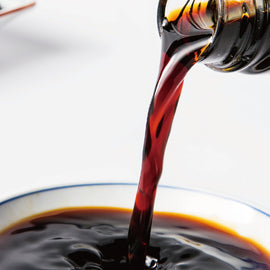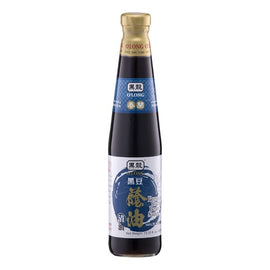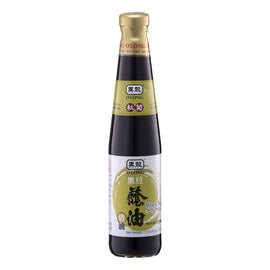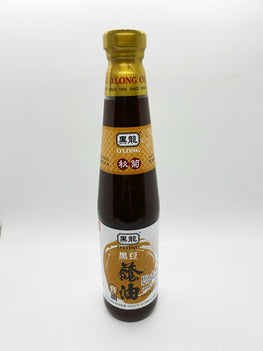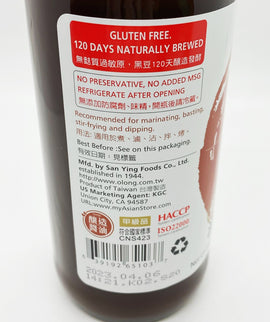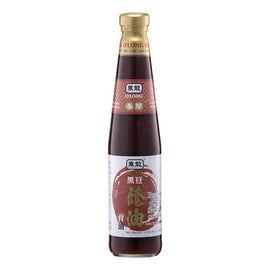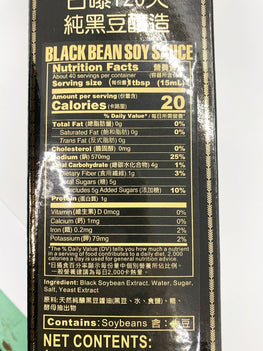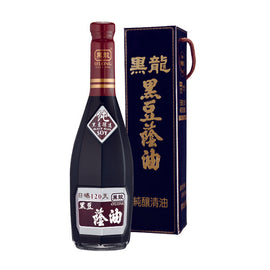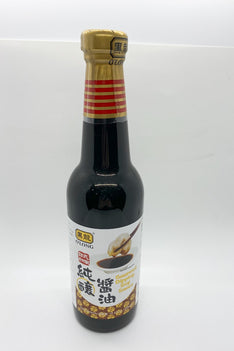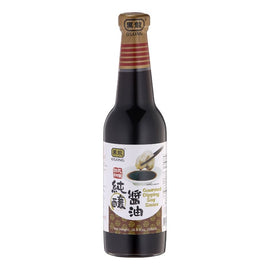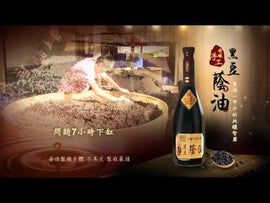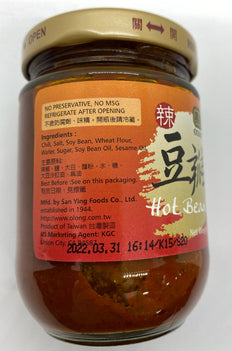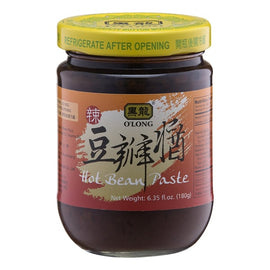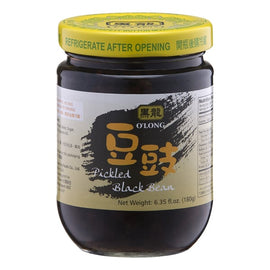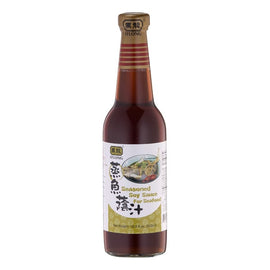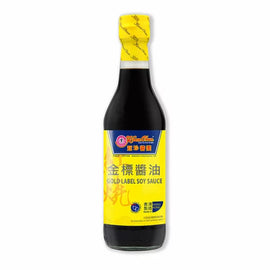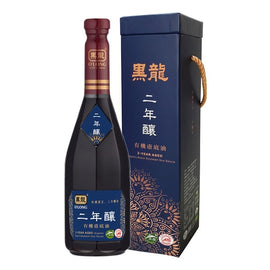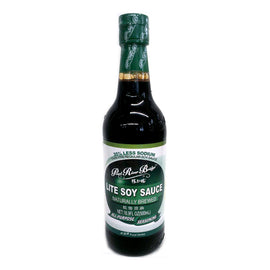Product successfully added to your shopping cart

SOY SAUCES
Beyond the Bottle: A Guide to Soy Sauce Varieties and Their Culinary Applications
Soy sauce is the undisputed champion of umami, a foundational ingredient in pantries across the globe. But if you think that bottle of dark liquid in your cupboard is just for fried rice, you're missing out on a world of flavor. Not all soy sauces are created equal. From light and salty to dark and sweet, understanding the different types can transform your cooking from good to restaurant-quality.
Let's dive into the wonderful world of soy sauce.
The Basics: How Soy Sauce is Made
At its heart, traditional soy sauce is a fermented product made from just four ingredients: soybeans, wheat, salt, and water. This mixture is inoculated with a mold called koji (Aspergillus oryzae) and left to brew and ferment for months, sometimes years. This natural fermentation develops complex flavors of umami, sweetness, and acidity.
Many mass-produced soy sauces use a quicker, chemical hydrolysis method, resulting in a harsher, saltier, and less nuanced product. For the best flavor, look for labels like "naturally brewed" or "traditionally brewed."
A Guide to the Major Types of Soy Sauce
We can categorize soy sauces by their color, viscosity, and country of origin. Here are the main players you need to know.
1. Japanese Soy Sauces (Shoyu)
Japanese soy sauces are known for their balanced flavor and are the most common types found in Western supermarkets.
-
Koikuchi Shoyu (Dark Soy Sauce):
-
Profile: This is the all-purpose, standard Japanese soy sauce, accounting for over 80% of what’s consumed in Japan. It has a balanced umami, moderate saltiness, and a rich, reddish-brown color.
-
Application: Your everyday go-to. Use it for marinades, dipping sauces (like for sushi and sashimi), stir-fries, soups, and braises. If a recipe simply calls for "soy sauce," this is the one to use.
-
-
Usukuchi Shoyu (Light Soy Sauce):
-
Profile: Don't let the name fool you—"light" refers to color, not sodium. Usukuchi is actually saltier than Koikuchi! It’s brewed with more salt and a special fermented rice beverage called mirin, resulting in a lighter color but a more assertive saltiness.
-
Application: Its primary role is to season food without darkening its color. Perfect for clear soups, delicate fish, pickles, and simmered dishes (nimono) where you want to preserve the ingredients' natural hue.
-
-
Tamari:
-
Profile: Originally a byproduct of making miso paste, tamari is made with little to no wheat, making it a great gluten-free option (but always check the label!). It has a thicker, richer consistency, deeper color, and a smoother, less sharp flavor with a stronger soybean taste.
-
Application: Excellent as a dipping sauce for sashimi and sushi. Its robust flavor stands up well in glazes, marinades, and with heartier dishes. It's a favorite for those avoiding wheat.
-
-
Shiro Shoyu (White Soy Sauce):
-
Profile: The opposite of tamari, Shiro is made with a high proportion of wheat and very few soybeans. It’s fermented for a shorter time, resulting in a thin, pale amber color and a delicate, sweet, and slightly tart flavor.
-
Application: A secret weapon for chefs. Use it where color is critical—in cream sauces, dashi broth, chawanmushi (savory egg custard), or drizzled over white fish or tofu to enhance flavor without any visual impact.
-
-
Saishikomi Shoyu (Twice-Brewed Soy Sauce):
-
Profile: A premium, rich soy sauce where the brewing process is started with previously made soy sauce instead of salt water. This creates an incredibly deep, complex, and slightly sweet flavor with a syrupy texture.
-
Application: Treat this as a finishing sauce. A few drops are all you need to elevate a dish. Use it for sashimi, tofu, or as a final drizzle over steak or grilled vegetables.
-
2. Chinese Soy Sauces
Chinese soy sauces often have a simpler, saltier, and more robust profile than their Japanese counterparts, with a greater focus on the soybean itself.
-
Light Soy Sauce (生抽 - Shēngchōu):
-
Profile: This is the most commonly used soy sauce in Chinese cooking. It is thin, light in color, and salty with a fresh, sharp umami punch. It is equivalent to Japanese Koikuchi in usage, but not always in taste.
-
Application: Used for seasoning during cooking and in dipping sauces. It’s the workhorse for stir-fries, steamed dishes, and dressings.
-
-
Dark Soy Sauce (老抽 - Lǎochōu):
-
Profile: This sauce is made from light soy sauce that’s been aged longer and often blended with molasses or caramel, giving it a thicker, syrupy texture, a much darker color, and a milder, slightly sweet, and complex flavor.
-
Application: Never used as a dipping sauce. Its purpose is to add a deep, dark color and a rich flavor to braised dishes like red-cooked pork, as well as to fried rice and noodles. A little goes a long way.
-
3. Other Regional Varieties
-
Korean Soy Sauce (Guk-ganjang):
-
Profile: Similar to Japanese tamari, it's a byproduct of doenjang (Korean fermented bean paste) production. It has a clear, light brown color and a straightforward, clean, salty taste with minimal wheat.
-
Application: Primarily used for soups (guk) and namul (seasoned vegetable side dishes).
-
-
Indonesian Kecap Manis:
-
Profile: This is a whole different category. It’s a thick, sweet soy sauce fortified with palm sugar and aromatics like star anise and garlic. It has a syrupy consistency and a flavor reminiscent of molasses.
-
Application: Essential for Indonesian and Malaysian cuisine. It’s the key ingredient in dishes like Nasi Goreng (fried rice) and Mie Goreng (fried noodles), and makes a fantastic marinade for satay.
-
Quick-Reference Application Chart
| Type of Soy Sauce | Flavor Profile | Best Uses |
|---|---|---|
| Japanese Koikuchi | Balanced, umami, salty | All-purpose: marinades, stir-fries, dipping |
| Japanese Usukuchi | Very salty, light color | Preserving color in soups, seafood, pickles |
| Tamari | Rich, smooth, gluten-free | Dipping (sashimi), glazes, heartier dishes |
| Chinese Light (Shēngchōu) | Salty, sharp umami | Stir-frying, seasoning, dipping sauces |
| Chinese Dark (Lǎochōu) | Mild, sweet, syrupy | Braising, adding color to fried rice/noodles |
| Kecap Manis | Very sweet, thick, aromatic | Indonesian fried rice, satay marinade |
Final Pro Tips
-
Taste Before You Add: Always taste your soy sauce before adding it to a dish, as saltiness and intensity vary dramatically between brands and types.
-
Layer Your Flavors: In Chinese cooking, it's common to use both light and dark soy sauce. The light provides the salty base flavor, while the dark adds color and depth.
-
Store Properly: Keep your soy sauce in a cool, dark place. While some recommend refrigeration after opening, it's not strictly necessary for most commercially stable brands, but it can help preserve its peak flavor for longer.
By expanding your soy sauce repertoire, you unlock new dimensions of flavor. So next time you're at the market, pick up a new variety and experiment. Your taste buds will thank you.

